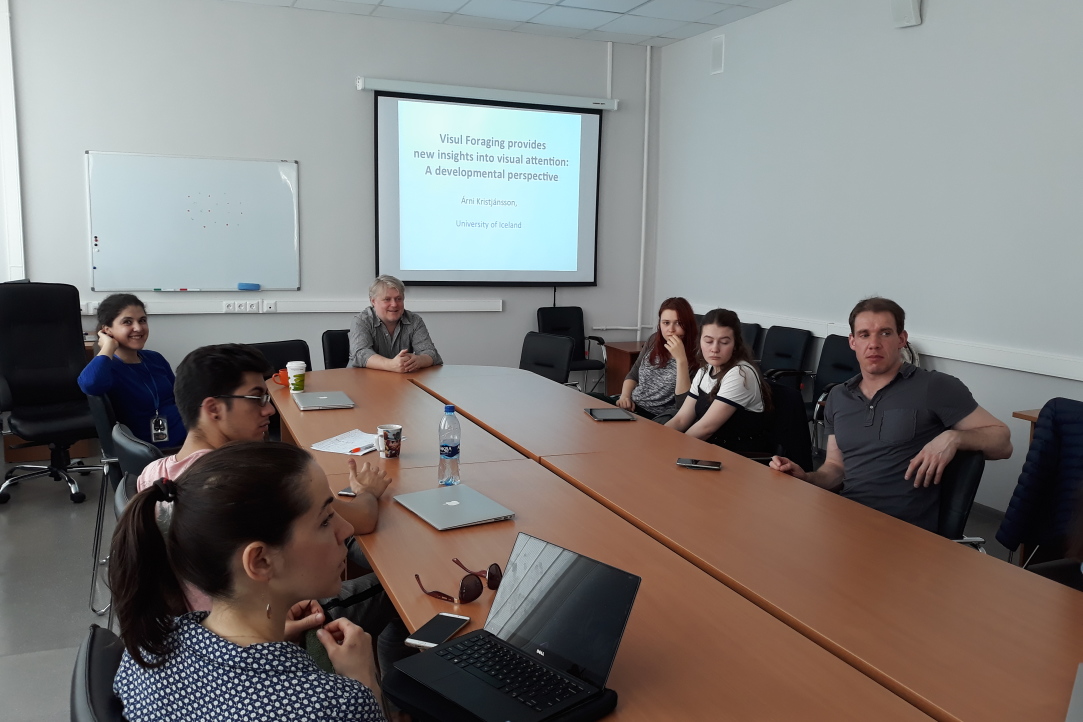Visual foraging in children: A promising avenue for studying cognitive development?

Visiting Scholar Árni Kristjánsson from University of Iceland gave the seminar on visual foraging. A recently developed visual foraging task, involving multiple targets of different types, can provide a rich and dynamic picture of visual attention performance. Initial results on children indicate that they have difficulty with foraging for two target types, not only when they are defined by a conjunction of features but, unlike adults, also when they forage simultaneously for two target types that are distinguished from distractors by a single feature. Importantly, such feature/conjunction differences between adults and children are not seen in more traditional single-target visual search tasks. The results also show that foraging ability improves dramatically between the preschool and middle school years and that this improvement reflects greater ease with switching between target types. The older children showed foraging patterns similar to adults: randomly switching between target templates during feature foraging, but exhaustive foraging for a single target type before switching during conjunction foraging. Younger children, conversely, tended to stick with the same target type for long runs during feature foraging. A connection was established between foraging ability and both working memory and attentional flexibility, but not inhibition. Foraging is a promising field to study visual attention, and how it changes throughout the lifespan.
